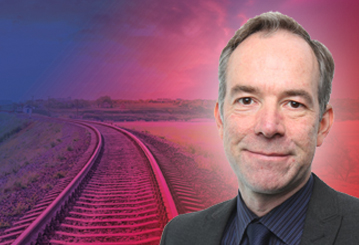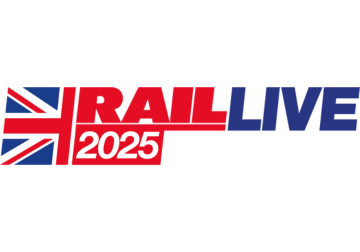Railway infrastructure never stands alone. It interacts with the wider transport infrastructure and shapes the landscape around it. It affects roads, rights of way, local wildlife, people’s residences, and much more.
Inevitably, investment in rail means investment in the infrastructure it crosses, too. And that can add a surprising amount to the costs of a major rail project such as HS2, as Mel Holley explores in our feature on page 26.
Railway infrastructure never stands alone. It interacts with the wider transport infrastructure and shapes the landscape around it. It affects roads, rights of way, local wildlife, people’s residences, and much more.
Inevitably, investment in rail means investment in the infrastructure it crosses, too. And that can add a surprising amount to the costs of a major rail project such as HS2, as Mel Holley explores in our feature on page 26.
HS2 was not supposed to improve these other works, but rather to provide like-for-like adaptations where necessary.
But you have to plan and build to modern standards, so inevitably some of it ends up being improved as it’s updated. And that’s even before you get into negotiations with NIMBYs (and in this case IMBYs) - concerned locals, high-profile campaign groups, local government, and many others.
It’s always been like that with rail - just look at how local bigwigs and landowners shaped the Victorian rail network, from tunnels under estates to the locations of city stations.
And development has not got any easier - if anything it’s now harder to jump through the planning process hoops. There are many more of them, and they’re higher. Or that’s how it feels from the point of view of the builder.
As Mel points out, some of these extra costs are not without benefits. They may be in capacity, modernity, speed, resilience, accessibility, active travel, or even new community projects that have little to do with rail but are nonetheless worthwhile. It’s not all money down the drain, but it all pushes up costs.
High speed rail in this country has turned out to be 15 times more expensive than in other major European countries. Things have to change if the next big infrastructure project isn’t to follow the path of HS2 into that upwards spiral of costs.
This government says it’s determined to reform systems around planning that seem to conspire against major infrastructure projects.
Last month, it introduced to Parliament the Planning and Infrastructure Bill to remove obstacles to large-scale developments, from housing to nuclear power, making it easier to realise major rail projects. The bill has gone through two readings and is now at Committee stage. The top construction contractors broadly support it, while environmental charities are against it as it stands.
But there is no doubt we need reform to avoid another situation such as that which befell HS2, where costs escalated (at least in part) to meet growing legal, environmental and planning challenges.
Despite Parliamentary approval, after debates that led to numerous tunnel additions, HS2 still faced having to get consent from 8,000 different local authorities and other interested parties. The government will now reform the statutory consultee system that requires developers to consult with way too many bodies and community groups on too many subjects, all of which adds to delays and increases costs.
The government is also changing the rules to prevent challenges to infrastructure projects coming back to court again and again. Objectors trying to frustrate developments and delay major projects will get just one chance to do so in the future.
One of the key changes will be to replace the system of meeting specific environmental goals based on a narrow case basis.
Instead of the rules-based systems employed elsewhere, UK planning proceeds on a case-focused basis. It’s subject to multiple challenges and numerous consultations. This gets in the way of serious and significant infrastructure projects and sets us back compared with other countries. Its scope is much bigger than rail, of course, but rail is one of the sectors that suffers as a result.
The infamous bat tunnel is one example of this, costing £100 million to protect a small number of bats on the basis that not one bat life should be lost.
No one wants to see any bats harmed, of course, but there must be a better way of ensuring that expenditure produces a better result overall for the cause of conservation - and perhaps at a lower cost. This is not HS2’s fault - it’s just following the rules. It’s the rules that need reforming, and that is what the government is setting out to do.
Environmental impacts need to be assessed from a wider perspective, considering all the various angles and alternative measures. Today’s narrow project-by-project case-based approach could be replaced by a more strategic assessment of the project’s larger effect on the surrounding area, introducing the ability to offset environmental impacts as well as preventing them.
Developers could then proceed with less bureaucracy and a clearer vision of what it is they need to do. It may also avoid developers feeling they need to gold-plate their proposals to mitigate the risk in a process that’s not always clear on exactly what requirements developers have to meet. .
Together, these changes could get projects moving much faster, saving time and money. A more balanced approach with a broader outlook could also prove more effective in protecting the environment and conserving wildlife, especially in terms of the ‘bang per buck’.
Planning reform is just getting under way, and there are still many questions around what shape the new regime should take and how it will be administered.
For example, the government can’t simply disregard the Conservation of Habitats and Species Regulations of 2017, which require site-specific assessments.
Then there’s the questions of who or what organisation is best placed to manage it, how that decision-maker prioritises the many projects competing for urgent attention, and many other questions over how it will work in practice.
But change is coming. And it should make major rail projects run more smoothly, more quickly, and while not actually within budget, perhaps a little less over budget.
Login to continue reading
Or register with RAIL to keep up-to-date with the latest news, insight and opinion.



















Login to comment
Comments
No comments have been made yet.